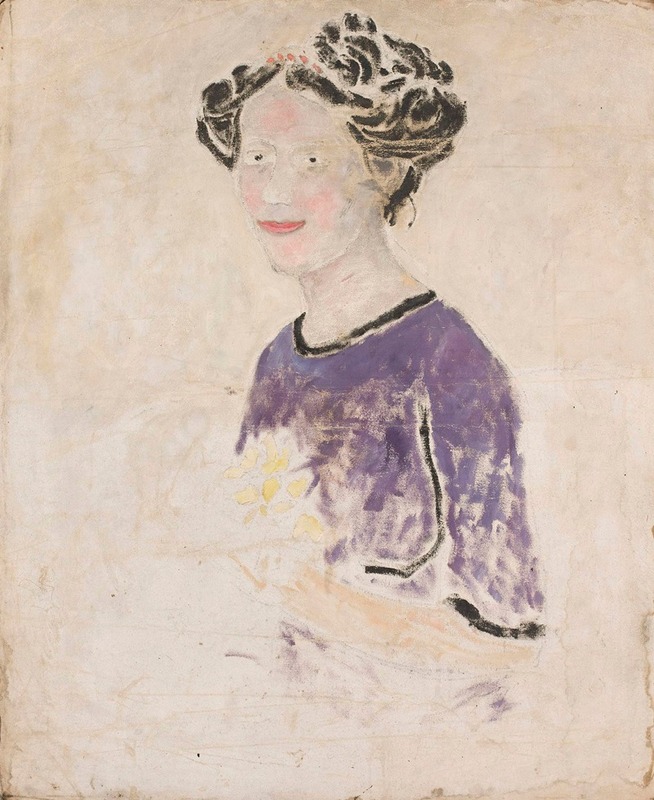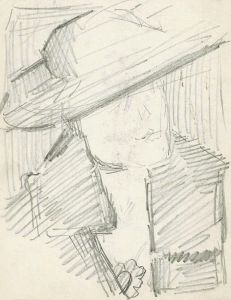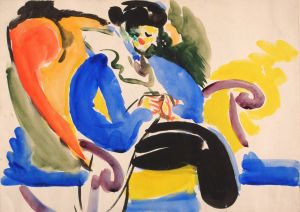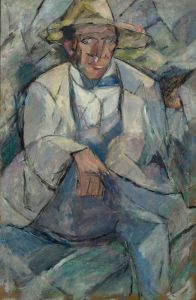
Woman in a lilac dress
A hand-painted replica of Tadeusz Makowski’s masterpiece Woman in a lilac dress, meticulously crafted by professional artists to capture the true essence of the original. Each piece is created with museum-quality canvas and rare mineral pigments, carefully painted by experienced artists with delicate brushstrokes and rich, layered colors to perfectly recreate the texture of the original artwork. Unlike machine-printed reproductions, this hand-painted version brings the painting to life, infused with the artist’s emotions and skill in every stroke. Whether for personal collection or home decoration, it instantly elevates the artistic atmosphere of any space.
Tadeusz Makowski was a Polish painter known for his unique style that combined elements of Post-Impressionism and Cubism, often focusing on themes of childhood and rural life. His work is characterized by a distinct use of color and form, often depicting figures in a simplified, almost geometric manner. One of his notable works is "Woman in a Lilac Dress," which exemplifies his artistic approach and thematic interests.
"Woman in a Lilac Dress" is a painting that captures the essence of Makowski's style. The artwork features a female figure adorned in a lilac-colored dress, rendered with a sense of simplicity and elegance. Makowski's use of color in this painting is particularly noteworthy, as the lilac dress stands out against the more subdued background, drawing the viewer's attention to the central figure. The choice of lilac, a color often associated with tranquility and introspection, adds a layer of emotional depth to the piece.
Makowski's approach to form in "Woman in a Lilac Dress" reflects his interest in Cubism, though his interpretation is more subtle and personal. The figure is depicted with a certain geometric abstraction, yet retains a sense of humanity and warmth. This balance between abstraction and realism is a hallmark of Makowski's work, allowing him to convey complex emotions and narratives through seemingly simple compositions.
The painting also reflects Makowski's fascination with everyday life and ordinary people. By choosing to depict a woman in a simple dress, Makowski elevates the mundane to the level of fine art, inviting viewers to appreciate the beauty in everyday moments. This focus on the ordinary is a recurring theme in Makowski's oeuvre, as he often drew inspiration from his surroundings and the people he encountered.
Makowski's background and experiences greatly influenced his artistic development. Born in 1882 in Oświęcim, Poland, he studied at the Academy of Fine Arts in Kraków before moving to Paris in 1908. In Paris, he was exposed to various avant-garde movements, including Cubism, which left a lasting impact on his work. Despite the influence of these movements, Makowski maintained a distinct style that was deeply personal and reflective of his Polish heritage.
Throughout his career, Makowski's work was well-received, and he exhibited in various prestigious venues across Europe. His paintings, including "Woman in a Lilac Dress," continue to be celebrated for their unique blend of color, form, and emotion. Makowski's ability to capture the essence of his subjects with simplicity and grace has earned him a lasting place in the history of modern art.
In summary, "Woman in a Lilac Dress" by Tadeusz Makowski is a testament to the artist's skill in combining elements of Cubism and Post-Impressionism to create works that are both visually striking and emotionally resonant. Through his use of color, form, and subject matter, Makowski invites viewers to find beauty in the ordinary and to appreciate the subtle complexities of human emotion.

















![Graphic design for cover of Survey Graphic Magazine; ‘Food’.] [Design with text and food items](/imgs/249248/s/winold-reiss-graphic-design-for-cover-of-survey-graphic-magazine-food-design-with-text-and-food-items-877075df.jpg)
